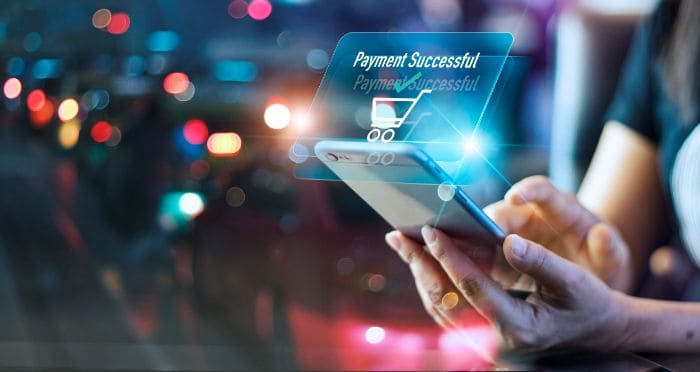Tips for Using Mobile Payment Apps Safely

Contactless payment solutions are gaining popularity with every passing year. While some people still prefer to pay in cash, others find using mobile payment apps far more convenient. In fact, electronic payments, along with credit card payments, make up over 60% of all payments. This percentage might grow even more in the next few years.
However, whenever there is money involved, there are certain risks. Mobile payments are not an exception, even if you use reliable mobile payment methods such as Google Pay and Apple Pay. Below you can find how to use these apps safely, but before going through the practical tips, let’s see the risks of using mobile payment solutions.
Noteworthy mobile payment risk
Consumers tend to switch to a new payment method if they find it more user-friendly and convenient than others. They often do it without considering the risks. Knowing the risks involved with using mobile payment software can help you curb them and use the apps safely.
Losing your phone or getting it stolen
One of the most common scenarios for many people is getting their phone lost or stolen. That wouldn’t be a problem if smartphones didn’t house personal and sensitive information, including payment data.
They can use your phone along with payment apps to make purchases. The worst-case scenario is that you’ve attached your credit score to a mobile payment app. In this case, they can rack up charges on your card and potentially damage the credit score you have worked so hard to build.
Getting your phone infected with malware
Next, we have malware infections. Viruses and malicious software are no longer exclusively targeting desktop computer users. Smartphones can get infected, too, especially if you use them on public and unprotected Wi-Fi networks without a Virtual Private Network app.
A VPN download can make your internet connection much safer. For instance, a VPN encrypts all internet traffic, ensuring safety on all websites. So, even if you perform payments on unknown networks, your transaction should be safer. Additionally, many financial scams exist, and you need a tool to protect the information you send to the web.
In general, the outcome depends on the malware that infects your phone. A keylogger will record screen taps on your phone, making it possible for cybercriminals to discover your usernames and passwords. Trojan horses can give hackers complete control of your phone. So, other appropriate security applications are necessary. Antivirus tools for smartphones tend to get neglected. However, consider getting one anyway.
Falling victim to a cyber scam
Cyber scams are the final risk you must be aware of if using mobile payment apps. These scams are often cheap, such as a hacker impersonating one of your friends. Other times, they are part of an elaborate social engineering scheme. The fraudsters often use social media and dating apps to cultivate relationships with their victims.
They also send phony emails containing a phishing link to trick you into clicking it and disclosing your payment information. In either case, you lose money and get your online accounts suspended pending investigation. So, follow tips for avoiding payment app scams: such recommendations can save you a lot of money and stress.
How to use mobile payment apps safely
While adding your credit or debit card to your favorite mobile payment app exposes you to the risks mentioned above, there are still plenty of things you can do to protect yourself.
Secure your phone
Whether using an Android phone or iPhone, your smartphone packs a small arsenal of security measures. You can use these security measures to add additional layers of protection to your phone and secure payments through mobile apps.
For instance, you can enable a lock code plus a biometric lock such as a fingerprint or face scan. It will make it hard for people who steal your phone to unlock it and use it to ramp up charges on your cards.
Enable remote lock and wipe
Both Android phones and iPhones come with a version of the “Find My Phone” feature. This feature is handy as it can help you locate your phone when you misplace it. It becomes even more useful if you lose your phone or someone steals it.
Once you enable the “Find My Phone” feature, you can disable your phone. If you think there is a high chance they can unlock your phone and use it, you can even wipe it entirely and disable perpetrators from using it to make purchases.
For instance, there are clear-cut tips for finding, locking, or erasing lost Android devices. If you have added a Google account to your device, the Find My Device feature is activated automatically. So, as soon as you realize you have lost your device, sign in to your Google account via a different device. Google offers ways to erase all data on your phone. However, bear in mind that it won’t remove SD cards.
Use two-factor authentication
All popular mobile payment apps feature two-factor authentication (2-FA). You will make your payments more secure if you enable it. Instead of immediately charging your credit card, the app will require you to enter a passcode or PIN. This way, you can prevent fraudulent charges.
Two-factor authentication request pops up as a notification. If you are not trying to make a purchase and get one of these requests, you can react swiftly and stop fraudulent transactions before they occur. The best option is to use official sources for 2-FA. For instance, verification sent via text messages is considered the least safe option.
Use antivirus tools
There are plenty of top-notch antivirus apps for mobile devices, and you should install one of them. These apps provide real-time protection from viruses and various types of malware examples. Make sure to update them to stay protected against the latest threats regularly.
Conclusion
Mobile payment apps don’t provide actual payment data but only account names for a specific payment. However, in some instances, this type of protection is not enough. Securing your phone, enabling remote wipe, using 2-FA, and installing antivirus software can help you add additional layers of security and use mobile payments apps safely.




